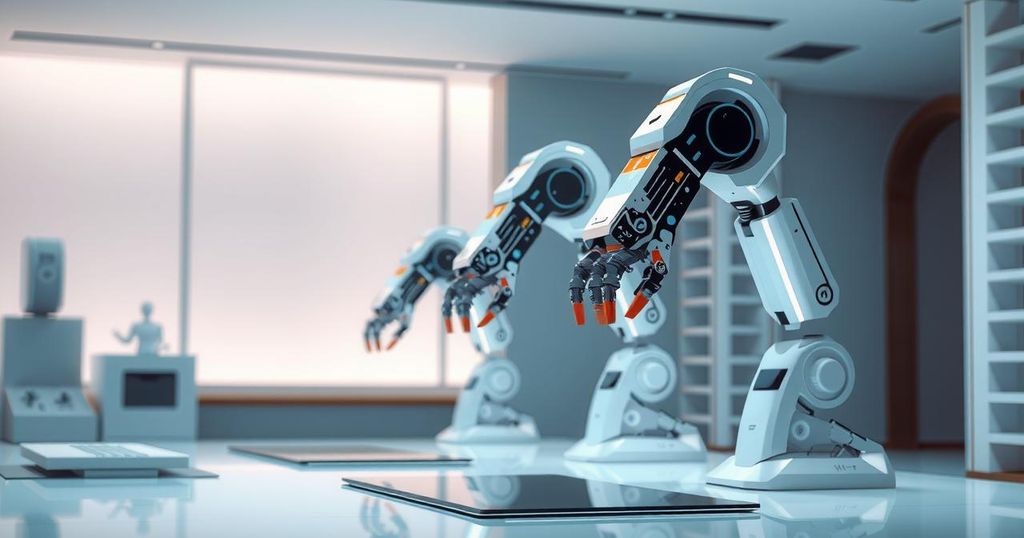Top Robotics Trends for 2024: Insights from the IFR
In 2024, the IFR identifies key trends in robotics, including the rise of AI-driven automation, collaborative robots, mobile manipulators for material handling, digital twin technology for performance optimization, and humanoid robots integrating into human environments. These developments reflect the growing demand for automation and innovative solutions to labor shortages.
The International Federation of Robotics (IFR) has released its top five global robotics trends for 2024, attributing the surge in automation demand to technological innovations. As of 2022, operational robots worldwide reached approximately 3.9 million, signaling a significant rise in robot density with an average of 151 robots per 10,000 workers. This year, the IFR highlighted notable trends that differ from previous years.
1. The utilization of AI and machine learning in robotics is predicted to grow stronger than ever. The rise of generative AI, which enables systems to intuitively program through natural language rather than coding, marks a turning point. This technology fosters predictive maintenance, potentially saving substantial costs in industries like automotive, where unplanned downtime can cost over $1 million an hour.
2. Human-robot collaboration, highlighted by the increase in collaborative robots (cobots), continues to thrive. Enhanced sensors, vision technology, and smart grippers allow cobots to assist humans safely in various tasks. The growing market for cobot applications is being driven by shortages in skilled labor, particularly in welding, emphasizing that automation can address labor shortages rather than exacerbate them.
3. Mobile manipulators, or MoMas, are set to revolutionize materials handling by merging mobility with cobot dexterity. These robots excel in navigating complex environments, conducting inspections, and performing maintenance tasks. Their ability to support human workers amid labor shortages positions them as critical assets in sectors like automotive and logistics.
4. The application of digital twin technology is gaining momentum, enabling the optimization of physical systems through virtual replicas. By simulating real-world operational data, digital twins can be tested and modified without real-world risks, thus providing invaluable insights that enhance efficiency and innovation in robotics.
5. Expectations for humanoid robots are on the rise, as advancements allow these human-like machines to operate flexibly in environments designed for people. Their design facilitates easier integration into existing infrastructures, paving the way for broader acceptance and application in sectors like logistics and manufacturing.
The 2024 robotics trends outlined by the IFR reflect significant technological advancements that are reshaping industries. The rise of operational robots, driven by AI and machine learning, is a critical factor in improving workplace efficiency and reducing labor shortages. As companies increasingly incorporate collaborative robots and digital twin technology, the landscape of automation is continuously evolving, offering innovative solutions to modern challenges.
In summary, the IFR’s identification of the top robotics trends for 2024 showcases a fascinating trajectory of growth and innovation in automation. The integration of AI, the rise of collaborative robots, the emergence of mobile manipulators, the application of digital twins, and advancements in humanoid robots highlight how technology is not only enhancing productivity but also addressing labor challenges across various sectors.
Original Source: www.therobotreport.com




Post Comment